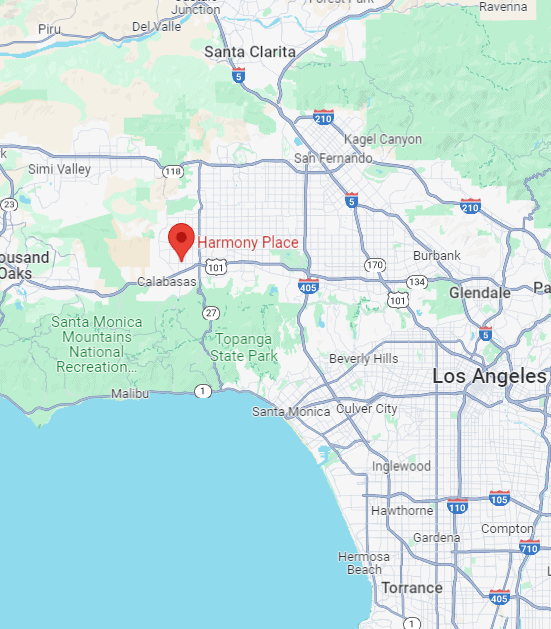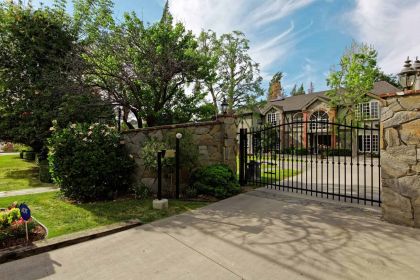How to Pay for Inpatient Rehab & Residential Treatment in Los Angeles, CA
At Harmony Place in Los Angeles, we offer innovative solutions that show you how to pay for inpatient rehab and residential treatment without compromising quality care. Our comprehensive programs combine flexible financing, insurance partnerships, and sliding scale fees to ensure every individual can access our top-tier recovery services.
Explore our detailed guide to learn more about our affordable inpatient rehab options, expert financial guidance, and dedicated support designed specifically for those seeking how to pay for residential treatment in a trusted Los Angeles rehab facility.
Does Health Insurance Pay for Inpatient Rehab in Los Angeles, CA?
Many health insurance companies and plans will pay for inpatient rehab programs to varying degrees. Coverage depends on your specific insurance policy, so reviewing your plan details or contacting your insurance provider is crucial. Typically, insurance may cover aspects such as detoxification, residential substance use disorder treatment, and certain therapies deemed medically necessary for addiction treatment.
Some plans may require you to get pre-authorization or may have limitations on the length of stay or types of services covered. To determine your coverage options for inpatient treatment at residential addiction treatment centers, contact your insurance company or the Harmony Place Drug and Alcohol Treatment admissions team. We can help begin the admissions process by verifying your insurance benefits, discussing any potential out-of-pocket rehab costs, assisting you in navigating the insurance process and discussing alternative ways of funding addiction treatment.
How to Get Health Insurance to Pay for Residential Treatment in Los Angeles
So, how to get insurance to pay for residential inpatient rehab? If you are wondering about how to pay for inpatient addiction rehab and you have insurance, there are some steps you can take to ensure your commercial health insurance covers residential inpatient drug addiction and alcohol dependence rehab in LA. Review your policy to understand coverage details, limitations, and requirements.
Contact your insurance provider or Harmony Place directly to verify specific coverage for residential treatment services and inquire about deductibles, co-payments, and the need for pre-authorization. If pre-authorization is necessary, gather documentation to demonstrate the medical necessity of residential mental health treatment or addiction treatment. Choose an in-network facility with your insurance plan to maximize coverage benefits. Collaborate closely with the facility to accurately submit claims to your insurance company and follow up to ensure your claims are processed. Typically, how you pay for rehab will depend on your specific policy terms.

Request Guidance on How to Pay for Inpatient Rehab
How to Pay for Inpatient Los Angeles Rehabs Without Insurance Coverage
If you don’t have health insurance coverage but are seeking affordable addiction recovery, there are alternative ways to cover rehab costs. Many facilities offer income-based sliding-scale fees, making treatment more accessible. Some rehab facilities also provide financing or payment plans to spread the cost over time. These options ensure people without insurance still have avenues to receive care and support.
Leveraging Personal Savings or Personal Loans for Inpatient Rehab
If you are paying for rehab without insurance, leveraging personal savings or personal loans can be viable options to finance residential treatment. Personal savings allow you to directly allocate funds towards treatment costs without incurring debt. Consider budgeting and planning ahead to ensure your savings cover the entire duration of treatment.
Alternatively, personal loans from banks, credit unions, or online lenders can provide immediate financial support. Compare interest rates, repayment terms, and fees to choose the most suitable loan option. Discuss repayment plans that fit your budget and consider consulting financial advisors for guidance on managing expenses during and after your stay at live-in treatment centers. These approaches empower you to access residential treatment and prioritize your recovery journey effectively.
Income-Dependent Sliding Scale Fees
Income-dependent sliding-scale fees can significantly reduce the cost of treatment at 24-hour care facilities, making it more accessible based on your financial situation. To determine a personalized fee structure, facilities offering sliding-scale fees assess your income and financial resources. This approach ensures that lower-income people pay less for treatment while receiving comprehensive care.
To benefit from sliding-scale fees for in-house rehabilitation services, provide proof of income during intake. This documentation helps the facility calculate your fee accurately. Discuss payment options and any additional financial assistance programs available to further support your ability to afford residential treatment.
Payment Plans for Inpatient Rehab
Flexible payment plans offered by inpatient rehab centers allow you to manage the cost of addiction treatment, even if you don’t have immediate funds available. These plans typically break down the total cost into monthly installments, making it easier to budget and plan. When considering a facility, inquire about payment plan options and discuss terms that suit your situation.
Facilities may require a down payment or initial deposit, followed by regular payments throughout your stay. Clarify any interest rates, late fees, or penalties associated with the payment plan. Opting for a residential treatment payment plan enables you to focus on recovery without having an immediate financial burden, providing peace of mind during your treatment journey.
Identifying Financial Assistance or Family Support
Identifying alternative financing for rehab or leveraging family support can alleviate the financial burden of residential treatment. Research non-profit addiction treatment support organizations, community grants for addiction treatment, or state-funded programs that offer financial aid for substance abuse treatment. These resources often provide grants or scholarships based on need, allowing you to offset treatment costs.
Additionally, reaching out to family members or loved ones for support can be instrumental. Discussing your situation openly with family members may lead to financial contributions or loans that can help cover expenses. Consider creating a budget or repayment plan to outline how any financial support will be utilized and repaid, ensuring clarity and mutual understanding. By exploring these avenues for substance abuse recovery on a budget, you can secure the necessary financial assistance to access residential treatment and focus on your recovery journey effectively.
Exploring Community Resources and Charity Options
Exploring community resources and charity options can provide valuable financial support if you are wondering how to pay for residential treatment centers. Look into local nonprofits, community health centers, or religious organizations offering grants or financial assistance for addiction treatment. Many organizations have programs designed to help people in need cover residential care costs.
Some charities and foundations specialize in funding healthcare services, including addiction treatment, through donations and fundraising efforts. Contact these resources to inquire about eligibility criteria, application processes, and available support for drug rehab without insurance. By tapping into community resources and charity options, you can potentially secure the financial assistance necessary to embark on your recovery journey and receive the comprehensive care needed for long-term wellness.
Treatment Assistance With Grants and Scholarships
Seeking treatment assistance through grants and or looking for scholarships for rehab programs can help ease the financial burden of accessing residential care. Many organizations offer grants and scholarships for addiction treatment that do not require repayment. Research and apply for these opportunities based on eligibility criteria such as financial need, demographic background, or specific addiction challenges.
Many treatment facilities also may offer scholarships or financial aid programs to assist individuals who demonstrate a commitment to recovery but face financial constraints. Prepare documentation such as proof of income or medical records when applying for grants or scholarships. By exploring these avenues, you can potentially secure funding to cover all or part of your residential treatment costs, facilitating your journey toward recovery and wellness.
Crowdfunding Campaigns for Treatment Coverage
Crowdfunding campaigns can be effective at raising funds to cover treatment costs at residential behavioral health facilities. Platforms like GoFundMe or Kickstarter allow you to share your story and financial needs with a broad audience, from friends and family to strangers. Create a campaign page detailing your journey, the importance of treatment, and how donations will support your recovery.
Use social media and personal networks to spread the word and encourage donations. Transparently outline the specific amount needed and how funds will be used. Regularly update supporters on your progress and express gratitude for their contributions. Crowdfunding campaigns can help financially and foster a supportive community around your recovery efforts.
Employee Assistance Programs (EAPs)
Employee assistance programs (EAPs) offered by your employer can be valuable resources for accessing support and financial assistance for residential treatment. These programs typically provide confidential assessments, counseling services, and referrals to treatment facilities for employees dealing with substance abuse issues. EAPs may also include coverage or financial assistance to help employees access addiction treatment, including residential addiction recovery homes.
If you’re considering residential treatment, contact your human resources department or EAP administrator to inquire about available benefits and coverage details. EAPs aim to support employees in managing personal challenges while remaining productive and well in the workplace. These programs can support navigating treatment options and overcoming financial barriers to accessing short- or long-term residential rehab.

Rehab Centers in LA that Offer Guidance on How to Pay for Inpatient Rehab
Harmony Place at 23041 Hatteras St., Woodland Hills, CA 91367, and Harmony Place East, 22913 Burbank Blvd., Woodland Hills, CA 91367, offer private residential treatment programs. Contact us for details on addiction rehab payment plans and the insurance we accept.
Your journey towards recovery begins with making informed decisions about how to pay for inpatient rehab and residential treatment. At Harmony Place, our tailored financial solutions and expert care empower you to overcome cost barriers while receiving premium, personalized support in Los Angeles. We are committed to guiding you every step of the way.
Contact Harmony Place today to schedule a consultation and discover customized payment plans that demonstrate exactly how to pay for inpatient rehab and residential treatment. Let our experienced team help you or your loved one take the next step toward a brighter, healthier future in Los Angeles.

What Is a Residential Inpatient Drug & Alcohol Treatment Facility?
A facility that provides inpatient rehab for drug addiction provides a structured environment in which people can receive intensive care and support for substance abuse disorders. At these facilities, you live onsite throughout your treatment, typically for a set duration ranging from weeks to months. This setting allows you to focus on your recovery without distractions.
You benefit from 24/7 supervision and access to medical and therapeutic services in an LA inpatient rehab center. Treatment often includes medical detox, therapy sessions (both individual and group), educational programs, and skill-building activities to help you achieve and maintain long-term sobriety. These facilities provide a supportive community for addressing the causes of addiction and building strategies for a substance-free life.
Statistics on Private Pay Inpatient Residential Rehab in Southern California
In 2022, California’s substance use facilities served 90,992 clients, with 2,610 of them under the age of 18, according to a SAMHSA survey. Of the state’s 1,525 facilities, 671 were private, for-profit centers, and 678 were private non-profit facilities.
Cash or self-payment was the predominant payment option for substance abuse treatment, chosen by 1,262 individuals. Private health insurance covered treatment for 935 individuals, while Medicare and Medicaid supported 442 and 696 individuals, respectively. State-financed health insurance plans other than Medicaid were utilized by 469 individuals, and federal military insurance covered treatment for 399 individuals. A small number, 46 individuals, did not have any payment accepted for their treatment.
How Much Does Residential Inpatient Treatment for Substance Abuse Cost Without Insurance in California?
The cost of residential treatment for substance abuse in California without insurance can vary widely depending on factors such as the facility’s location, amenities, duration of stay, and specific treatment programs offered. On average, residential treatment can cost tens of thousands of dollars monthly.
Basic programs may start around $5,000 to $10,000 per month, while luxury rehab facilities can exceed $30,000. Additional costs may include medical detoxification, psychiatric services, and therapeutic activities. When researching treatment options, it’s essential to inquire about comprehensive fee structures and any potential additional charges for specific services. Many facilities offer financial assistance, sliding-scale fees, or payment plans to help individuals afford necessary residential treatment.
Finding Alternative Ways to Pay Residential Inpatient Treatment
Explore alternative options such as intensive outpatient programs (IOP) or partial hospitalization programs (PHP) to lower the payments during your residential treatment. These programs offer structured treatment with fewer overnight stays, making them more affordable than full-time residential care.
IOPs involve regular therapy sessions and support while allowing you to live at home, while PHPs provide intensive daytime treatment without overnight stays. These options can significantly reduce expenses while providing effective support for addiction recovery. To determine the most suitable treatment plan for your needs and budget, contact Harmony Place Rehab Center for personalized guidance and to discuss available programs. Their team can help you explore options that effectively align with your financial situation and recovery goals.
How to Get Admitted into a Residential Inpatient Addiction Treatment Program in Los Angeles, CA
To get into a residential inpatient addiction treatment program in Los Angeles, start by researching facilities that align with your needs. Contact the chosen facility to inquire about their admissions process, which typically involves an initial free assessment to determine the appropriate level of care. Prepare documentation such as identification, insurance information, and medical history to streamline the admissions process.
Assessment and Research
Assessment and research are crucial steps when considering residential inpatient addiction treatment. Begin by conducting thorough research on treatment facilities in Los Angeles that specialize in your specific needs, whether it’s substance abuse, dual diagnosis, or other conditions. Look for accredited programs with positive reviews and appropriate licensing.
Once you’ve identified potential facilities, like Harmony Place, reach out to inquire about the assessment process. Typically, this involves a comprehensive evaluation of your medical history, substance use patterns, mental health status, and overall treatment goals. Be prepared to provide accurate information during this assessment to ensure the facility can effectively tailor a treatment plan that meets your needs. Taking these steps helps ensure you find the right residential inpatient program to support your recovery journey in Los Angeles.
Insurance Verification and Financial Planning
Insurance verification and financial planning are essential for residential inpatient addiction treatment. Contact your insurance provider to verify coverage details for treatment services, including inpatient rehab. Understand your deductible, co-payments, and any out-of-pocket expenses that may apply. This will help you plan financially and avoid unexpected costs during treatment.
Additionally, discuss payment options and financial assistance available through the treatment facility. Some facilities, including Harmony Place, offer sliding-scale fees, payment plans, or scholarships to help offset costs. Prepare documentation such as insurance cards, identification, and income verification for admissions. By proactively managing insurance verification and financial planning, you can focus on your recovery journey with confidence and peace of mind.
Initial Evaluation and Medical Clearance
The initial evaluation and medical clearance process are critical when entering a residential inpatient addiction treatment program. Begin by scheduling an assessment with the treatment facility, where trained professionals will conduct a thorough evaluation of your physical health, substance use history, mental health status, and overall treatment needs.
During this evaluation, be prepared to provide accurate information about your medical history, current medications, and any existing health conditions. Medical clearance ensures you are physically and mentally prepared for residential treatment, ensuring your safety and well-being throughout the program. Contact Harmony Place Addiction Recovery for a free assessment.
Preparation and Admission Process
Preparing for the admission process into a residential inpatient addiction treatment program involves several key steps. Gather necessary documents such as identification, insurance information, and medical records. Contact the treatment facility to understand specific admission requirements and prepare accordingly. This may include completing intake forms, undergoing an assessment, and discussing your treatment goals with the admissions team.
Pack essential personal items and clothing suitable for the duration of your stay. Also, arrange travel or accommodations if the treatment facility is not local. By carefully preparing for admission, you can focus on your recovery journey from the moment you arrive, knowing that everything is in place for your treatment to begin effectively.
Prepare for Admission Into the Program
To prepare for admission into the program, start by gathering essential documentation such as identification, insurance details, and medical records. Contact the treatment facility to confirm what specific documents are required for admission and ensure you have everything in order. Complete any necessary intake forms or assessments the facility provides beforehand.
Pack personal belongings and clothing suitable for your stay, considering any guidelines or restrictions the facility provides. Arrange transportation to the treatment center and plan for accommodations if traveling from a distance. Finally, mentally prepare yourself by understanding the treatment process, setting realistic expectations, and discussing concerns or questions with the admissions staff.
Transition and Engagement
Transitioning into and engaging with the residential inpatient addiction treatment program involves acclimating to the new environment and actively participating in the therapeutic process. Upon arrival, familiarize yourself with the facility’s rules, schedules, and expectations to ensure a smooth adjustment. Engage in orientation sessions and meet with staff to understand your personalized treatment plan and goals.
Participate actively in group therapy sessions, individual counseling, and structured activities to support recovery. Connect with other people with similar experiences and goals to foster a supportive community within the program. Embrace opportunities for personal growth, learning coping skills, and addressing underlying issues contributing to addiction. You lay a strong foundation for achieving lasting recovery and wellness by embracing this transition and engaging fully with the program.
- How to Pay for Rehab Without Insurance
- How to Pay for Alcohol Rehab Los Angeles
- Ways to Pay for Drug Rehab
- Payment Methods for Dual Diagnosis
- How to Pay for IOP Los Angeles
- Ways to Pay for PHP Rehab
- How to Pay for Cocaine Addiction Rehab
- How to Pay for Fentanyl Rehab California
- Ways to Pay for Opioid Rehab LA
- How to Pay for Detox Los Angeles
- How to Pay for Inpatient Los Angeles
- How Much Does Rehab Cost in LA?
- Cost of Addiction Therapy
- Cost of Addiction Treatment
- Cost of Drug and Alcohol Aftercare
- Cost of Drug and Alcohol Detox
- Cost of Drug and Alcohol Intensive Outpatient
- Cost of Drug and Alcohol Outpatient
- Cost of Drug and Alcohol Partial Hospitalization
- Cost of Drug and Alcohol Residential Inpatient
- Cost of Dual Diagnosis Treatment
- Cost of Sober Living
- Cost of Treatment
Info and Statistics on Private Pay Inpatient Residential Treatment in Los Angeles
In California, 1,525 substance-use facilities served 90,992 clients, according to the 2022 National Substance Use and Mental Health Services Survey by the Substance Abuse and Mental Health Services Administration (SAMHSA). Of those clients, 2,610 were under the age of 18.
In 2022, in California, 671 substance use facilities were private, for-profit centers, and 678 were private, non-profit facilities. Cash or self-payment was the most frequently used option for substance abuse treatment, with 1,262 individuals choosing this method. Private health insurance covered treatment for 935 individuals, while Medicare and Medicaid supported 442 and 696 individuals, respectively. State-financed health insurance plans other than Medicaid were utilized by 469 individuals, and federal military insurance covered treatment for 399 individuals. A smaller number of people, 46, had no payment accepted for their treatment.
Nationwide, private non-profit facilities treated 53 percent of clients in 2011, decreasing to 46 percent in 2020. The number of clients in private non-profit facilities rose from 646,904 in 2011 to 726,238 in 2019, before falling to 504,780 clients in 2020, according to the National Survey of Substance Abuse Treatment Services (N-SSATS) conducted by SAMHSA.
Private for-profit facilities in the U.S. treated 32 percent of clients in 2011, increasing to 45 percent in 2020. The number of clients in private for-profit facilities rose from 395,577 in 2011 to 591,442 in 2019 before falling to 485,411 clients in 2020.












